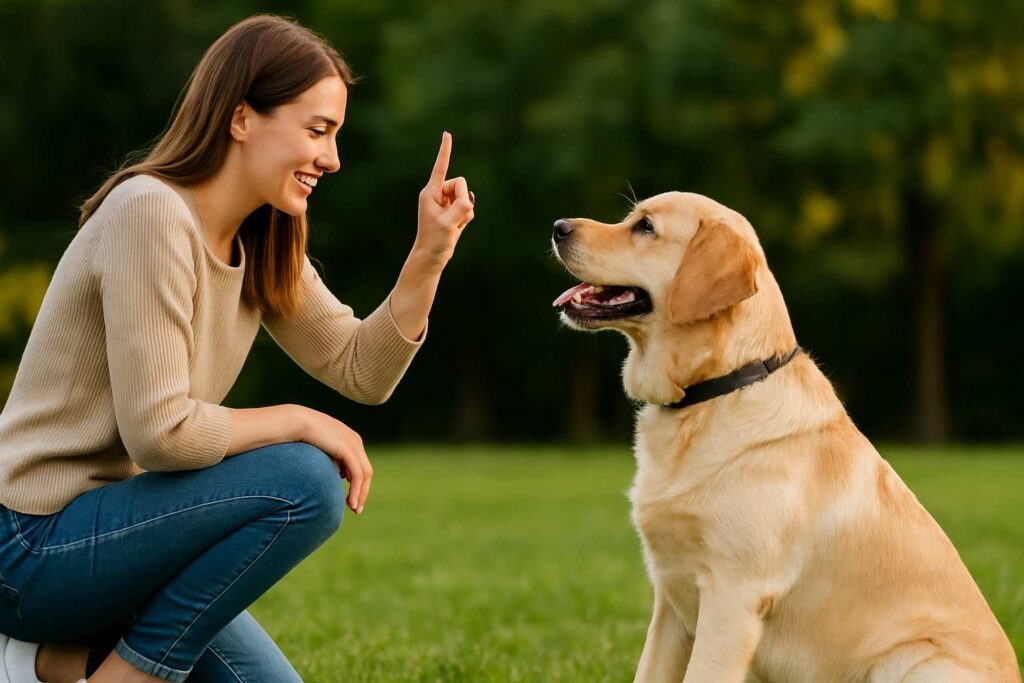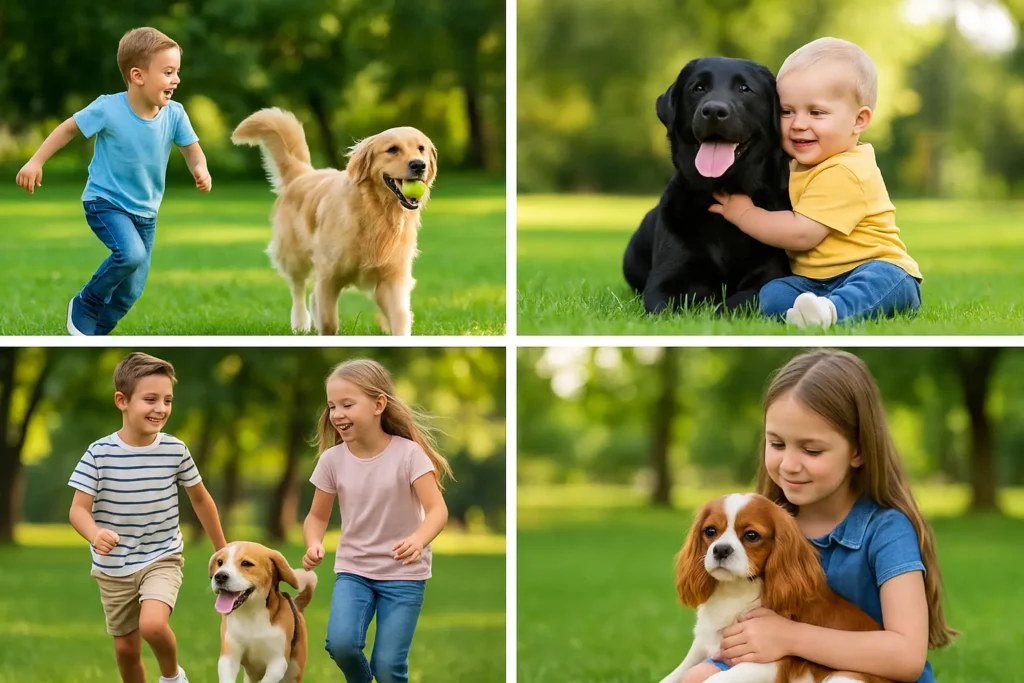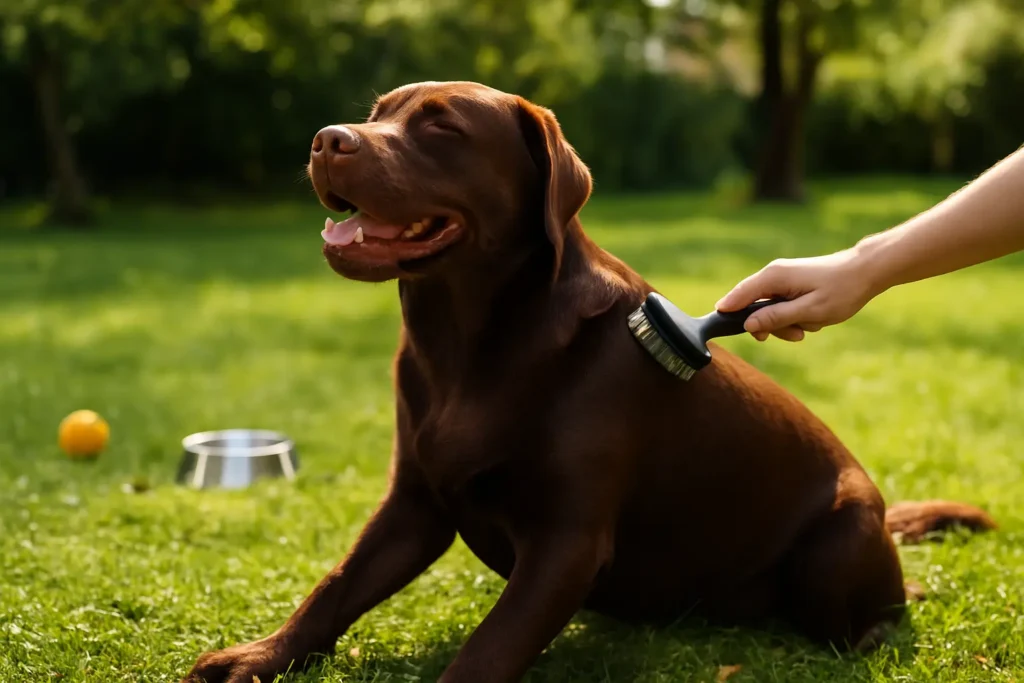Training Your Dog Doesn’t Have to Be Overwhelming
If you’re a first-time dog owner, I know exactly how you’re feeling—excited, overwhelmed, and maybe just a little lost. I was in your shoes not long ago, trying to figure out how to get my new pup to stop pulling on the leash (and stealing my socks!).
The good news? You don’t need to train your dog like a professional right away. You just need to start with the essentials—a few simple commands that lay the foundation for a well-behaved, happy pup.
In this guide, I’ll walk you through the top dog training commands that every beginner should teach, plus some real-life tips that helped me as a new pet parent.
1. Sit
Why it matters: “Sit” is the foundation of obedience. It helps with impulse control and creates structure before meals, walks, or greetings.
How to teach it:
- Hold a treat close to your dog’s nose
- Move your hand up so their head follows, causing their bottom to lower
- The moment they sit, say “Sit” and reward with the treat
Real-life example: I taught “Sit” in just two days by using it before every meal. Now my dog automatically sits when I open the pantry.
2. Stay
Why it matters: This command builds self-control and is essential for safety—especially near roads or front doors.
Steps:
- Ask your dog to “Sit”
- Hold your palm out and say “Stay”
- Take one step back, then return and reward
- Gradually increase the distance and duration
Common struggle: Some dogs struggle with staying when they’re excited. Start in low-distraction areas and build up slowly.
3. Come
Why it matters: “Come” is a potential lifesaver. If your dog bolts or slips the leash, this command brings them back to you.
How to train:
- Start indoors or in a fenced yard
- Crouch down, say your dog’s name and “Come!” in a happy voice
- Reward generously when they arrive
Mistake to avoid: Never call your dog to punish them. This creates negative associations with the word “Come.”
4. Down
Why it matters: It helps calm an excitable dog and teaches them to settle on command.
Training Steps:
- Start with your dog sitting
- Hold a treat near their nose, slowly lowering it to the floor
- As they follow, say “Down” and reward once elbows hit the ground
Helpful trick: Lure under your leg (so they have to duck under) if your dog resists lying down.
5. Leave It
Why it matters: “Leave it” protects your pup from grabbing dangerous things—like dropped food, sharp objects, or toxic plants.
Training:
- Show them a treat in your hand and say “Leave it”
- When they stop sniffing or licking, reward them with a better treat from your other hand
Real-life win: Mine once dropped a chicken wing mid-walk after I said “Leave it”—this command alone paid off tenfold.
6. No / Off
Why it matters: “No” or “Off” helps redirect undesirable behavior like jumping or chewing shoes.
- Say “No” firmly, not aggressively
- Redirect immediately to a desired behavior (e.g., Sit or Give Toy)
Tip: Consistency is key. If one person allows jumping and another doesn’t, your dog will stay confused.
7. Heel
Why it matters: Prevents your dog from pulling on walks, keeping them close and focused on you.
Steps:
- Walk with your dog beside your left leg
- Say “Heel” and reward frequently as they stay in position
- If they pull ahead, stop or change direction
Training gear: I used a front-clip harness and short leash. It made a huge difference with my 60-lb Labrador!
8. Place / Bed
Why it matters: “Place” tells your dog to go to a specific mat or bed. Great for visitors, mealtime, or when you’re busy.
Training Tip:
- Lead them to a mat or bed and say “Place”
- Reward once they lie down and stay there
Pro Tip: Teach this with a “Stay” command and slowly increase duration.
9. Wait
Why it matters: Teaches impulse control. Use it before going through doors, hopping out of cars, or eating.
Training idea:
- Ask your dog to “Wait” at doorways or curbs
- Gradually add duration and distractions
Difference between “Wait” and “Stay”: “Wait” is a short pause. “Stay” is until you release them.
10. Name Recognition
Why it matters: If your dog won’t look at you, they won’t follow any commands. This builds focus and engagement.
- Say their name cheerfully and reward eye contact
- Don’t pair their name with scolding (“Max, NO!”)
Game idea: Play “Name Game” in different rooms. Reward every time they look at you when called.
Bonus: Tools That Make Training Easier
Here are some affordable, beginner-friendly tools I recommend:
| Tool | Why It Helps | My Pick |
| Treat Pouch | Keeps hands free during training | Check on Amazon |
| Front-Clip Harness | Reduces pulling safely | My favorite here |
| Clicker | Adds consistency for marking behavior | Clicker I use |
| Training Mat | Great for “Place” command | See on Amazon |
Common Mistakes First-Time Owners Make
Inconsistency
Using “Down” one day and “Lie Down” the next confuses your dog. Be consistent with your cues and rewards.
Too Much Too Soon
Don’t expect your pup to master all 10 commands in one week. Focus on 1–2 at a time for best results.
Skipping Rewards
Dogs thrive on positive reinforcement. Use food, toys, or praise—but don’t skip rewards too early.
FAQs: First-Time Dog Training
How long does it take to train a dog?
Basic commands can take 2–4 weeks with 10–15 minutes a day. More advanced commands may take longer depending on age, breed, and consistency.
What are the best training treats?
Choose small, soft, high-value treats like:
- Boiled chicken pieces
- Freeze-dried liver
- Store-bought soft training treats
Make sure they’re safe, low-fat, and something your dog truly loves.
Can older dogs still be trained?
Absolutely. Older dogs often focus better than puppies. Just be patient and adjust the pace.
Final Thoughts: Progress Over Perfection
Training your dog isn’t just about obedience—it’s about bonding and building trust. Start small, stay patient, and celebrate the little wins (like a perfect “Sit” when the doorbell rings).
When I first brought home my dog, I wasn’t sure I could do it. But with consistent effort and these essential commands, we’ve built an amazing relationship—and you can too.Need help picking the right training tools or treats?
Check out My Recommended Products for first-time dog parents.




